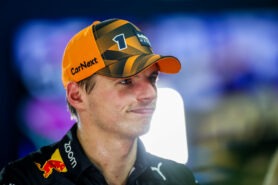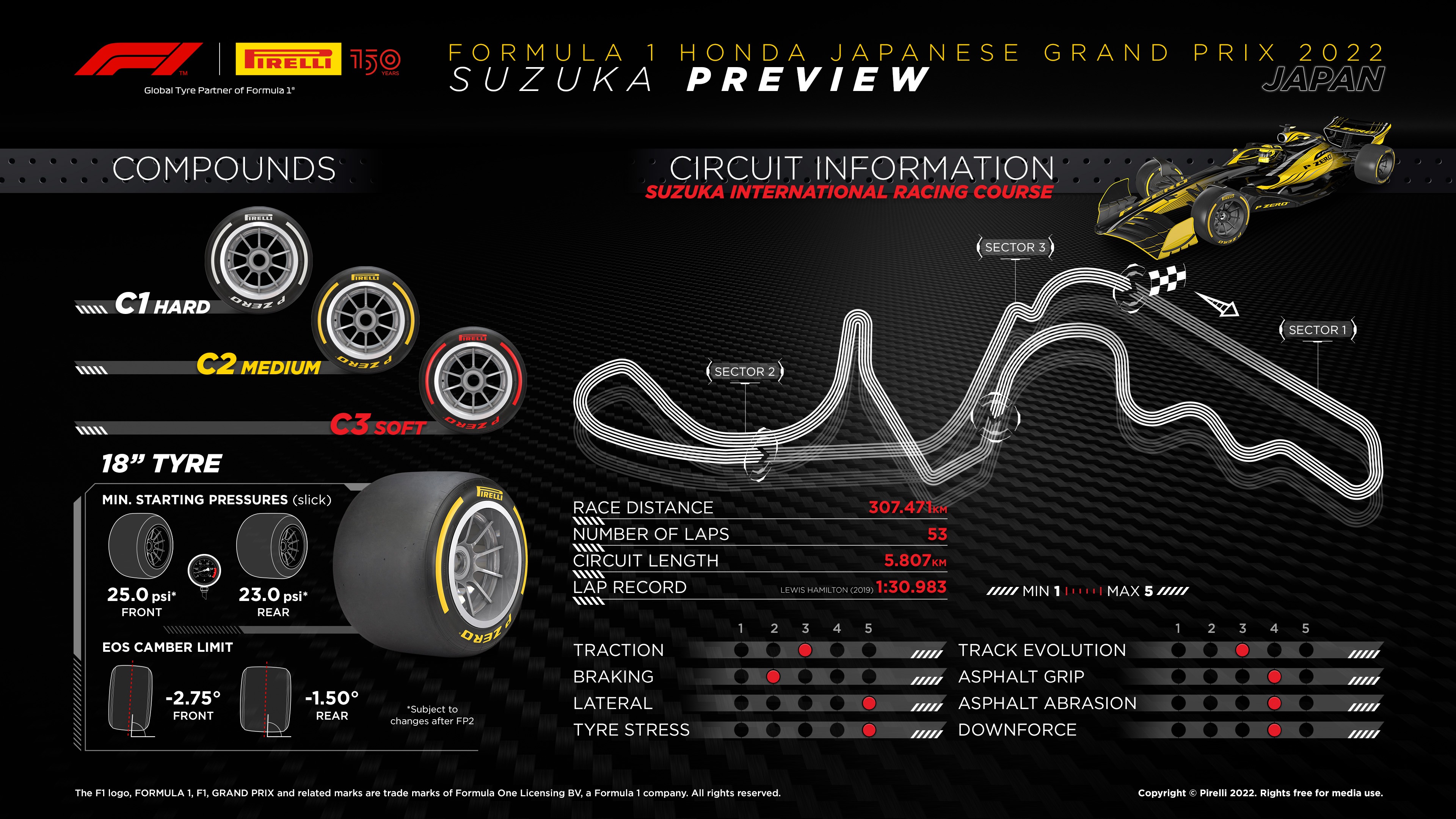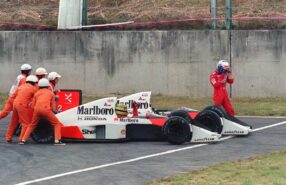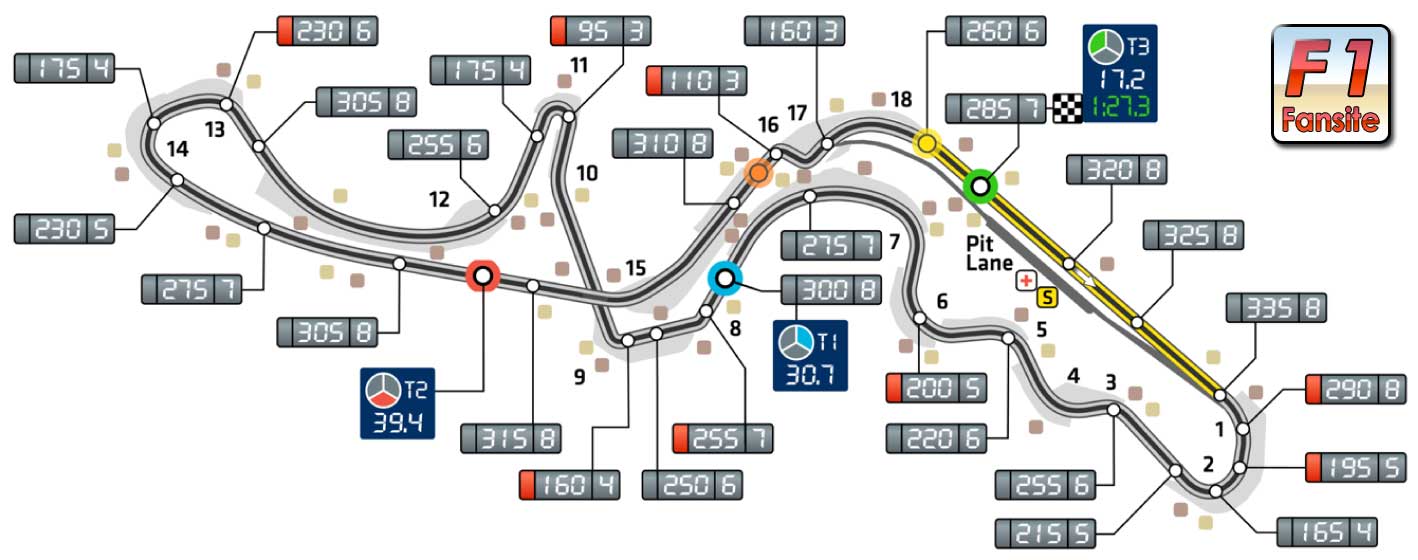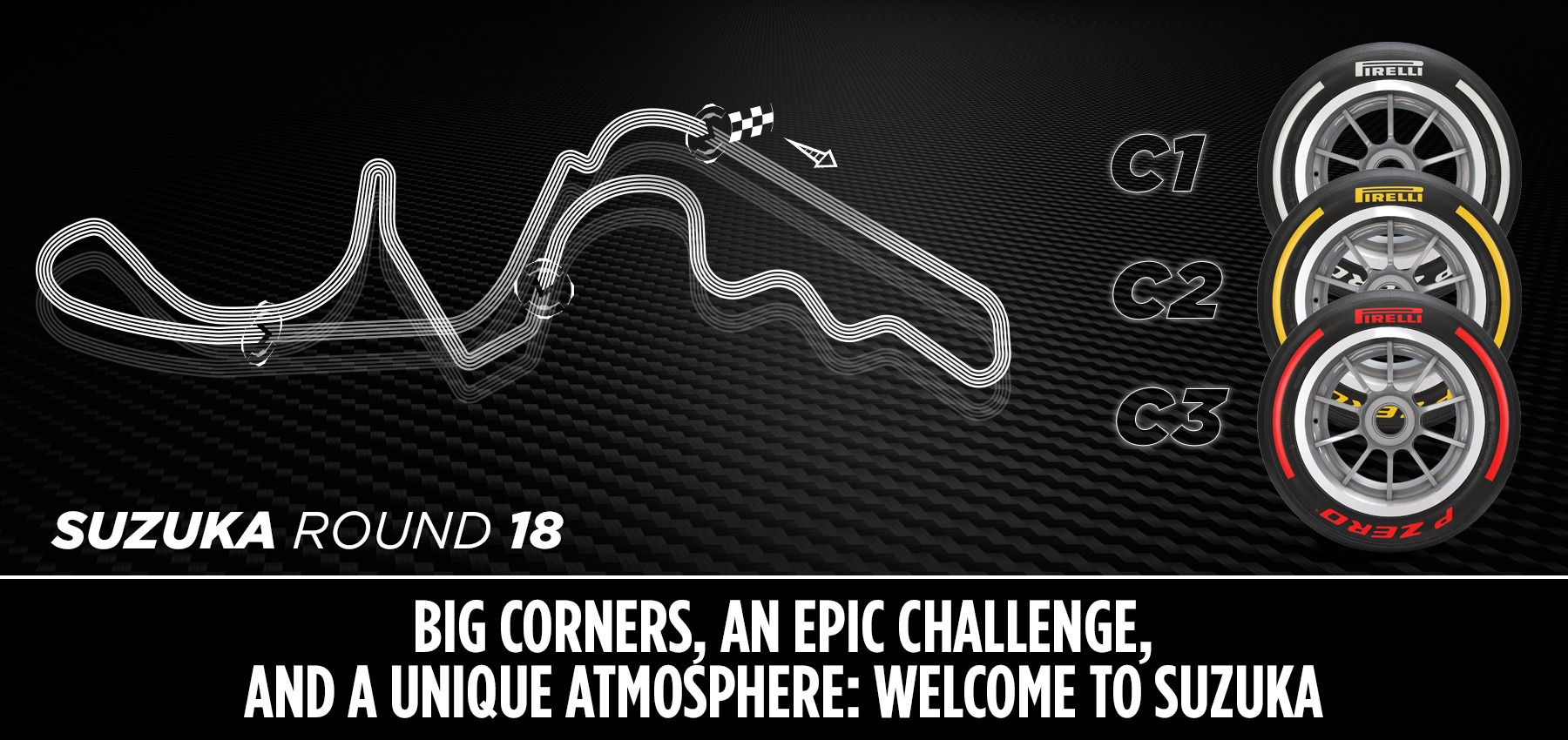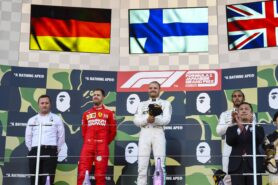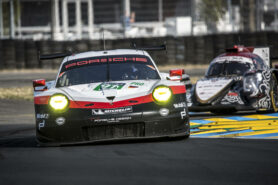Everything you need to know about the coming 2022 Japanese GP
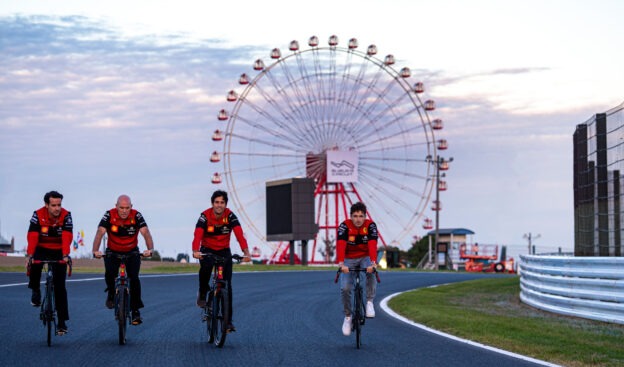
As controversy is again surrounding Formula 1, the 2022 campaign goes to Japan, where the series will race for the first time since 2019. The 2022 Japanese Grand Prix will be the 18th race of the year and is the second chance for Red Bull's Max Verstappen to become World Champion.
F1 Budget Cap Saga rolls on
However, there's a big situation with the Budget Cap. After rumours suggested that two teams, including Red Bull, breached the Budget Cap both in 2021 in 2022, the FIA was set to reveal the information about last year's cost cap on Wednesday.
After a delay that wasn't explained, the FIA is now set to release the certifications of compliance on Monday, after the race, and after Verstappen's quite likely World Championship celebrations.
Whether teams will receive big penalties, including exclusion from the championship, for exceeding the budget cap or the information will simply show that each team worked under the cap is yet to be determined. Of course, more rumours will go around, and the Japanese round will certainly give us lots and lots of off-track content.
Next Matchpoint for Verstappen
In terms of the racing, F1 heads to Japan after an eventful wet-dry Singapore GP, which saw Sergio Pérez (first for Red Bull) and Charles Leclerc (second for Ferrari) delay Max Verstappen's title celebration for the upcoming race.
The Dutchman had a bad weekend, but now has a bigger chance to seal the deal, as the permutations are quite within the reach of his car and his talent. If Verstappen wins Sunday's race with the Fastest Lap, he will win the 2022 World Drivers' Championship regardless of Leclerc's and Pérez's positions.
In any other scenario, Verstappen needs to outscore Leclerc by eight points and Pérez by six. He leads the Monegasque by 104 points in the standings and has a 106-point gap over Pérez.
There are 138 points available for drivers in the 2022 F1 season, and Verstappen needs to leave Japan with a 112-point gap over his rivals to seal the championship 'battle' before the circus heads to Austin.
Behind the Top 3 in the WDC, George Russell is fourth for Mercedes with 203 points, one ahead of Ferrari's Carlos Sainz. Meanwhile, multiple World Champion Sir Lewis Hamilton is sixth with 170.
Red Bull leads with 576 points in the World Constructors' Championship. Ferrari is second with 439, and Mercedes is third with 373.
McLaren (129 points with Lando Norris and Daniel Ricciardo) had its best race of the year in Singapore with a 4-5 finish and overtook Alpine (125 points with Esteban Ocon and Fernando Alonso) for fourth place in the World Constructors’ Championship. The French team had reliability issues and now has two consecutive races without scoring.
Alfa Romeo (Valtteri Bottas and Guanyu Zhou) remains sixth in the WCC with 52 points.
Aston Martin (37 points - Sebastian Vettel and Lance Stroll) also had the best results of the season at Singapore and now surpassed Haas (34 points - Kevin Magnussen and Mick Schumacher) for seventh in the World Constructors’ Championship.
AlphaTauri (34 points - Pierre Gasly and Yuki Tsunoda), and Williams (6 points with Alexander Albon and Nyck De Vries) round out the WCC positions.
2022 Japanese GP Facts & Figures
The 2022 Japanese Grand Prix returns to Formula 1 for the first time since 2019 and the event will be the 35th Japanese round as part of the F1 World Championship.
The first World Championship Japanese Grand Prix took place at Fuji in 1976. Mario Andretti won the race for Lotus, and James Hunt famously won the Drivers' title for McLaren after Ferrari's Niki Lauda (as others did) withdrew due to the seemingly impossible weather conditions.
The race was again held at Fuji in 1977, with Hunt winning for McLaren in what was the final win of his career. Logistical issues meant the race was scrapped from the calendar and returned in 1987.
As in the first Grand Prix, title-deciding races became usual in Japan. Until today, the Formula 1 World Drivers' Championship has been decided 12 times in Japan, starting with Hunt in 1976.
Ayrton Senna sealed his three titles (1988, 1990, and 1991) in Suzuka, which hosted the Japanese round since 1987 (Nelson Piquet sealed the title in the 1987 race).
Alain Prost also sealed one of his titles in the Japanese Grand Prix at Suzuka (1989), while Damon Hill (1996), Mika Hakkinen (1998, 1999), Michael Schumacher (2000, 2003), and Sebastian Vettel (2011) joined the list later.
Moreover, Schumacher sealed his 1995 title (his second with Benetton) at the Pacific Grand Prix, also held in Japan. Japan has seen a title decided 13 times in Formula 1 history, more than any other country since 1950 (Italy is second with 12).
Apart from some controversial title deciders and tremendous races for the championship, the 2005 Japanese Grand Prix stands out, with Kimi Raikkonen winning from 17th on the grid for his most famous win with McLaren.
In recent memory, Jules Bianchi's crash in the 2014 round is heart-breaking for Formula 1 fans, as the young French driver later died from his injuries.
The most recent event at Japan was won by Valtteri Bottas, driving the Mercedes W10.
The most successful driver in the Japanese Grand Prix is Michael Schumacher with six wins (one with Benetton and five with Ferrari). Among the current racers, Hamilton leads with five wins in Japan (one in Fuji with McLaren and four at Suzuka with Mercedes). Vettel was also successful at Suzuka, with four wins for Red Bull.
Among teams, McLaren leads with nine wins, ahead of Ferrari's seven and Mercedes' six.
Suzuka Track Info
Suzuka is one of the most beloved circuits in the world, with drivers and fans agreeing that it is one of the best race tracks in the history of motor racing.
The circuit's current layout is 5.807-km long with 18 corners. The twisty sectors and the high-speed sections of the track have remained quite similar since 1987, with some small changes made in certain corners and the last chicane, known as Casio Triangle, being moved further or closer to the 130R curve.
The track was 5.859-meters long in 1987 when it was introduced to F1, but small changes to make the sector-one corners faster and tighter have shortened the track a bit.
Suzuka has hosted the Japanese Grand Prix 31 times since 1987. It held the event without interruption from 1987 to 2006 and then returned in 2009. The 2007 and 2008 races were held at Fuji.
The 2020 and 2021 events were not held due to issues generated by the Covid-19 pandemic.
The current records around the 'Figure Eighth' layout are the following:
Outright record: 1:27.064 min by Sebastian Vettel in 2019, driving the Ferrari SF90 at an average speed of 240,113 km/h.
Fastest Lap during a race: 1:30.983 min by Lewis Hamilton in 2019, driving the Mercedes W10 at an average speed of 229.770 km/h.
2022 Japanese Grand Prix - Tyres
The dry tyres for the 2022 Japanese Grand Prix will be the C1 as P Zero White hard, C2 as P Zero Yellow Medium, and C3 as P Zero Red soft.
Pirelli explained their choice with a statement in a press release and established the guidelines for the weekend: "Like Singapore that came just one week before, the Japanese Grand Prix was last held in 2019. The challenge is made even greater with the teams having to approach the circuit, weather conditions, and set-up in a completely new way with the latest generation of cars and tyres.
Suzuka is all about lateral forces rather than traction and braking, but the loads are quite evenly balanced between the left and right hand sides of the car. The cars and tyres are subjected to some of the longest sustained g force loadings seen throughout the year. 130R, for example, is a long radius corner (of 130 degrees) but it’s taken flat-out, as if it were a straight."
Moreover, the press release informed about changes to the second practice session on Friday: "The second free practice session in Japan has been extended to 90 minutes in order to allow 2023 prototype slick tyre testing (with the same arrangement in place for the United States Grand Prix).
The Suzuka and Austin tests are there to fine-tune the compounds for 2023, with the entire FP2 session devoted to tyre testing. If a team uses a young driver for FP1, it is allowed to run its own programme for the first 30 minutes of FP2, before concentrating on the tyre test for the remainder of the session. The prototype tyres can easily be recognised as they won’t carry coloured markings on the sidewalls."
Pirelli's Motorsport Director, Mario Isola, further explained Pirelli's view: "Ask the drivers which are their favourite circuits and Suzuka will always be high on the list: it contains demanding corners like nowhere else, such as 130R and Spoon, as well as a truly special atmosphere and history with incredible fans. There’s a roughly equal number of left and right corners in the unique figure of eight layout, which means that the circuit demands are evenly balanced.
The sustained energy loads through the tyres are some of the highest we register all year, and the track layout means that we bring the three hardest compounds in our range because of the high levels of tyre duty. With the latest generation of cars being heavier than before and the limits of performance constantly being pushed, that challenge is bigger than ever now. An innovation for this year is the fact that we will be testing some 2023 prototype tyres during an extended free practice session on Friday afternoon, as we finalise the specification for next year with the end of this season approaching.”
The minimum starting pressures for the tyres will be 25.0 PSI (front) and 23.0 PSI (rear).
2022 Japanese Grand Prix - Weather Forecast
Friday, Oct 7th - FP1 & FP2
Conditions: Periods of rain
Max. temperature: 18°C
Chance of rain: 70%
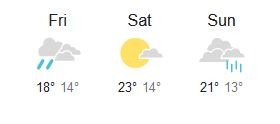 Saturday, Oct 8th - FP3 & Qualifying
Saturday, Oct 8th - FP3 & Qualifying
Conditions: Partly sunny
Max. temperature: 23°C
Chance of rain: 1%
Sunday, Oct 9th - Race
Conditions: Cloudy with a little rain
Max. temperature: 21°C
Chance of rain: 57%
Who will be on the 2022 Japanese Grand Prix Podium?
It is quite likely that Suzuka will crown a new World Champion, and Red Bull's Max Verstappen certainly has it in him to win the title by purely working towards his own goal, and not about where his 'rivals' finish the race.
We can expect a dominant victory from Max Verstappen and Red Bull on Sunday if circumstances are right for the team and the driver. Although there could be some drizzle in Sunday's race, it should not be a problem for Red Bull's car, as Sergio Pérez proved last week.
Of course, Ferrari and Mercedes could again show some competitiveness in certain sections of the circuit, but it seems a big task that those teams can beat Red Bull on a normal Sunday.
Moreover, Alpine will be under some pressure in the upcoming weekend, as reliability issues with both cars gave McLaren fourth place in the World Constructors' Championship for the time being.
The prediction for the top three of the 2022 Japanese Grand Prix is 1. Max Verstappen, 2. Lewis Hamilton, 3. Charles Leclerc.
✅ Check out more posts with related topics:


